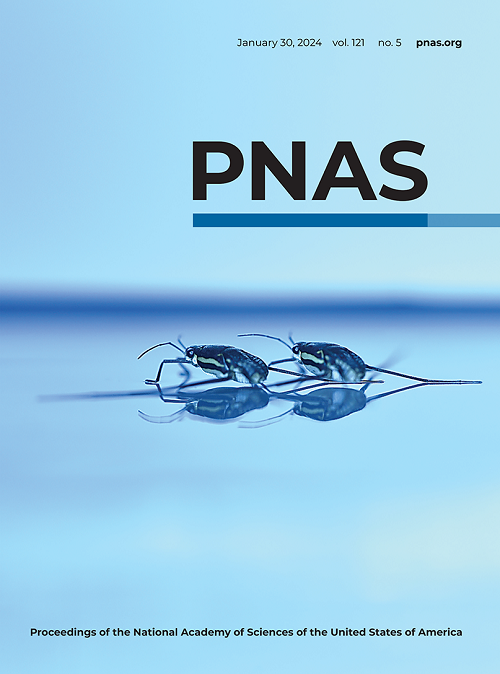具有微观-宏观双向因果关系的复杂系统动力学理论
IF 9.4
1区 综合性期刊
Q1 MULTIDISCIPLINARY SCIENCES
Proceedings of the National Academy of Sciences of the United States of America
Pub Date : 2024-12-06
DOI:10.1073/pnas.2408676121
引用次数: 0
摘要
在自然科学和社会科学中遇到的许多复杂系统中,微观尺度上控制系统动力学的机制取决于粗粒度宏观尺度上表征系统的状态变量的值(Goldenfeld和Woese, 2011, Noble等人,2019,Chater和Loewenstein, 2023)。状态变量,反过来,是对微观尺度变量的相关概率分布的平均值。无论是自顶向下的推理模型,还是自底向上的机械模型,都不能单独预测这种尺度缠绕系统对扰动的反应。我们描述并探索了一种动态理论的特性,该理论结合了自顶向下的信息理论推理和自底向上的状态变量依赖机制。该理论预测了微变量上非平稳概率分布的函数形式,并将时间演化的宏观变量的轨迹与这些分布的形式联系起来。从Maxent解中得到的拉格朗日乘子时间演化的解析表达式允许在高维系统中快速计算状态变量的时间轨迹。在非平衡化学热力学、流行病学、经济学和生态学中可能应用于规模缠绕系统的例子说明了该理论潜在的多学科范围。一个已完成的低维示例说明了该理论的结构,并演示了尺度纠缠如何导致从扰动中恢复缓慢,响应白噪声输入的时间序列谱变红,以及参数位移和随后恢复时的滞后。本文章由计算机程序翻译,如有差异,请以英文原文为准。
Dynamical theory of complex systems with two-way micro–macro causation
In many complex systems encountered in the natural and social sciences, mechanisms governing system dynamics at a microscale depend upon the values of state variables characterizing the system at coarse-grained, macroscale (Goldenfeld and Woese, 2011, Noble et al., 2019, and Chater and Loewenstein, 2023). State variables, in turn, are averages over relevant probability distributions of the microscale variables. Neither inferential Top–Down nor mechanistic Bottom–Up modeling alone can predict responses of such scale-entwined systems to perturbations. We describe and explore the properties of a dynamic theory that combines Top–Down information-theoretic inference with Bottom–Up , state-variable-dependent mechanisms. The theory predicts the functional form of nonstationary probability distributions over microvariables and relates the trajectories of time-evolving macrovariables to the form of those distributions. Analytic expressions for the time evolution of Lagrange multipliers from Maxent solutions allow for rapid calculation of the time trajectories of state variables even in high dimensional systems. Examples of possible applications to scale-entwined systems in nonequilibrium chemical thermodynamics, epidemiology, economics, and ecology exemplify the potential multidisciplinary scope of the theory. A worked-out low-dimension example illustrates the structure of the theory and demonstrates how scale entwinement can result in slowed recovery from perturbations, reddened time series spectra in response to white-noise input, and hysteresis upon parameter displacement and subsequent restoration.
求助全文
通过发布文献求助,成功后即可免费获取论文全文。
去求助
来源期刊
CiteScore
19.00
自引率
0.90%
发文量
3575
审稿时长
2.5 months
期刊介绍:
The Proceedings of the National Academy of Sciences (PNAS), a peer-reviewed journal of the National Academy of Sciences (NAS), serves as an authoritative source for high-impact, original research across the biological, physical, and social sciences. With a global scope, the journal welcomes submissions from researchers worldwide, making it an inclusive platform for advancing scientific knowledge.

 求助内容:
求助内容: 应助结果提醒方式:
应助结果提醒方式:


